What is a Web Developer Portfolio?
A web developer portfolio is a collection of your projects that shows off your skills. It's like your online resume where you display your best work.
Most people make a portfolio to include in job applications, but it can also be a great way to build your online presence and share what you do.
Why Do You Need a Portfolio?
When applying for web developer jobs, many applications ask for a link to your personal website. Even if it's not required, having a portfolio can help you stand out from other applicants.
How to Start Building a Web Developer Portfolio?
Before you start, think about these key things:
- What is your portfolio for? - Do you plan to use this portfolio solely to apply to jobs, to have a place online to post blogs, or to begin web development?
- What is your desired role? - Are you a front end, back end, full stack, software developer , or web developer?
- What kind of style do you want - Should your portfolio look professional, creative, simple, or casual?
Tip:
Don't worry about about making a fancy website if you're new to web development. Start with something simple, then improve it as you gain more skills.
Essential Sections for Web Developer Portfolio (+ Examples)
Every portfolio needs these key sections:
- Navigation Menu - Helps visitors find important sections of your site.
- Hero Section - The first thing people see, setting their first impression.
- About Me - A short introduction about you and your experience.
- Projects - A showcase of your best work with descriptions and links.
- Skills - A list of technologies and tools you know.
- Contact - A way for people to reach out to you, through email or your socials.
Let's go over each section in more detail.
1. Navigation Menu
If your portfolio has multiple pages or a long homepage, you'll need a navigation menu to make it easy to move around.
Typical links in a navigation menu include:
- Projects
- About Me
- Blog
- Contact
Tip:
Keep your menu text the same size as your main content or just a little bigger so it's easy to read but not distracting.
Navigation Menu Examples


Your navigation menu's design should align with the rest of your portfolio.
2. Hero
The hero section is the most important of your portfolio. This is where visitors decide if they want to stay on your website.
A good hero section usually includes:
- A friendly introduction - A simple welcome.
- Your Full name - First and last name. If your name is difficult to pronounce (you can add an audio clip for pronouncation if needed).
- Your role and experience - Example: "Front End Developer with 3 years of experience".
- Tech Stack - The main technologies you work with.
Hero Examples
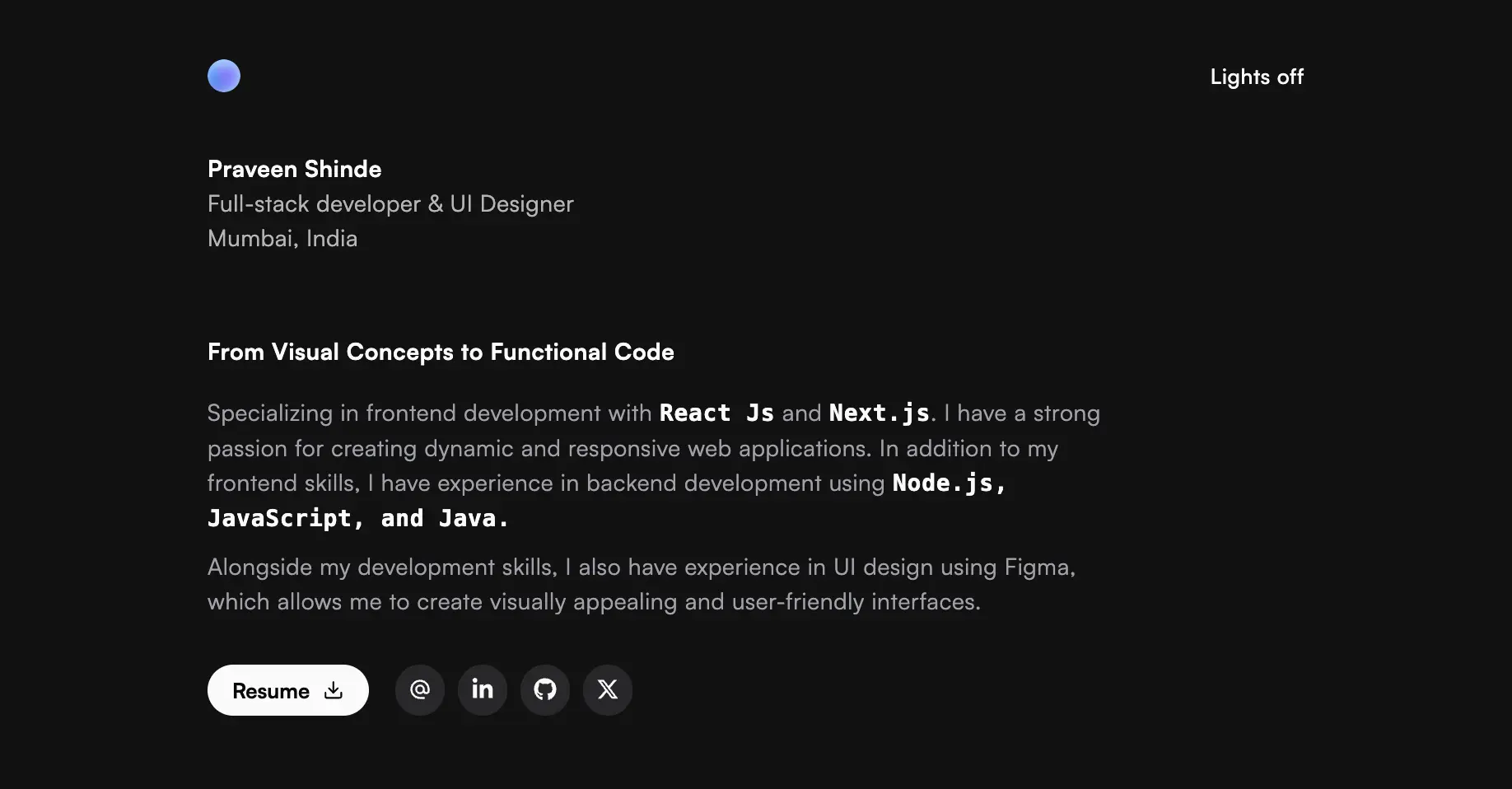

If your portfolio is just for online presence, you can keep everything in the hero section. But if it's for job applications, you should also include sections for projects and skills.
3. About Me
An about me section helps visitors get to know you better, allowing them to connect with you. You can present it in different ways:
- A short summary (2-3 short paragraphs) of your experience and goals.
- A small section on your homepage with basic details.
- A separate page with more in-depth info about your career, and interests.
About Me Examples
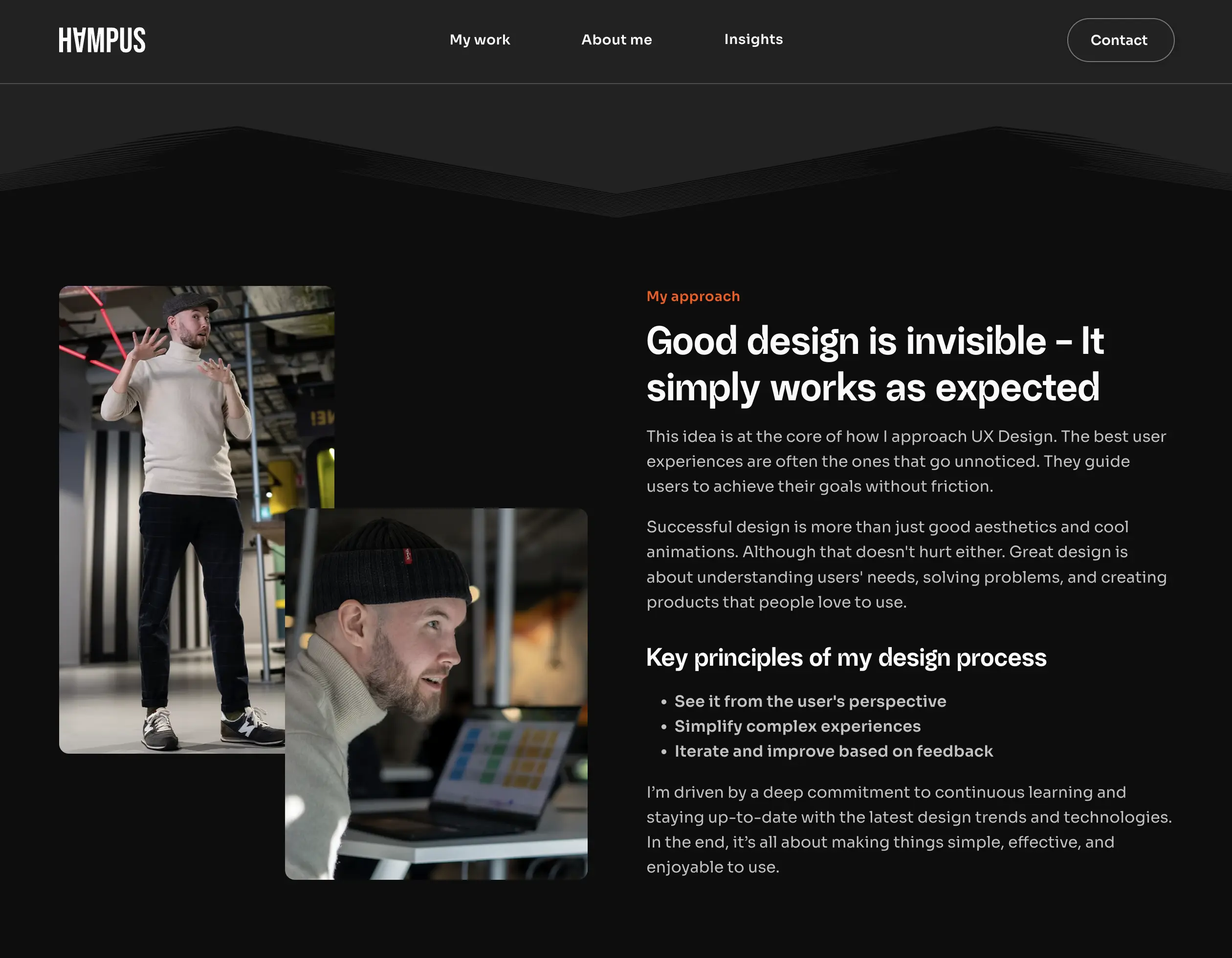
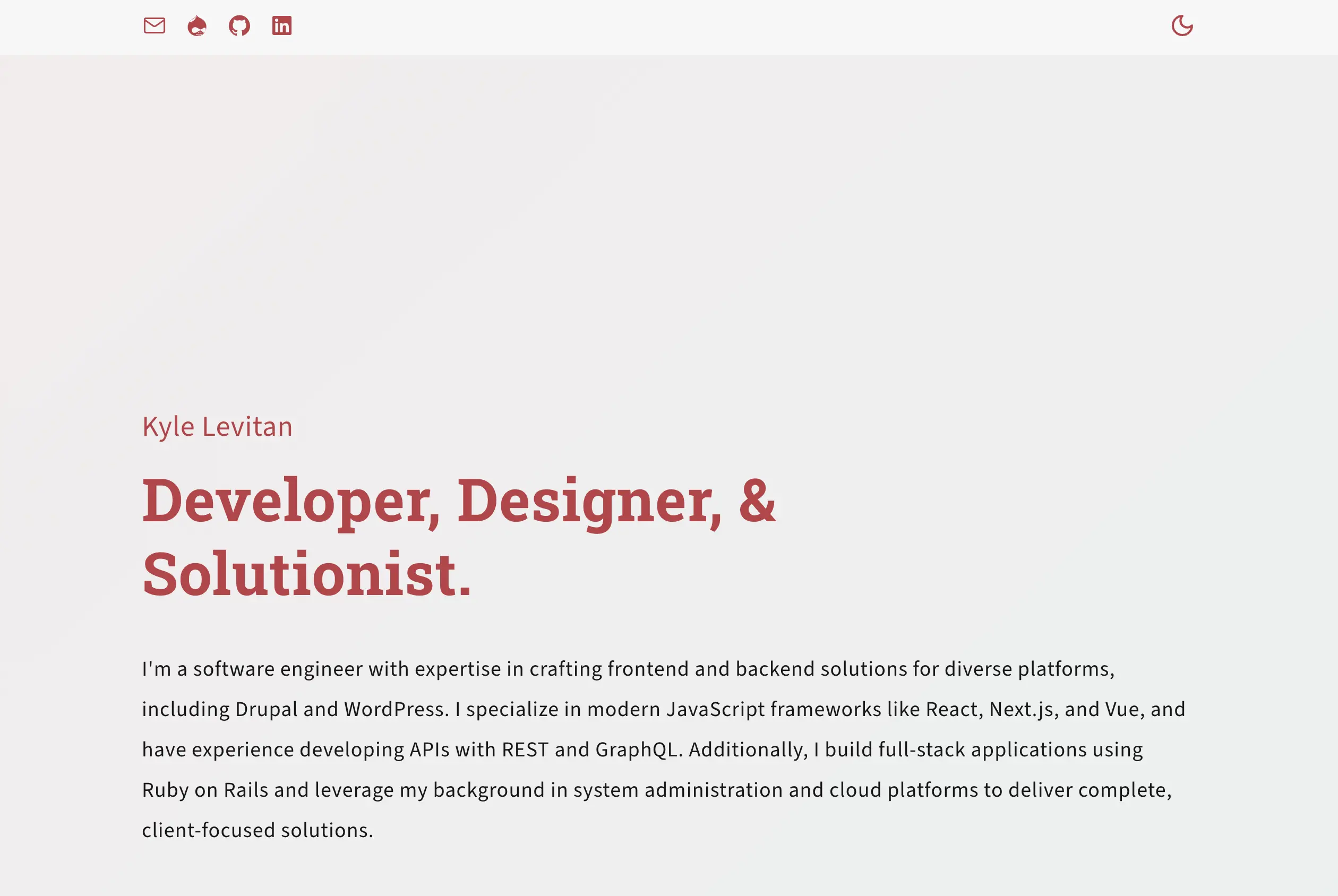
It's up to you on how much you want to share--just keep it focused on your work.
4. Projects
The projects section is the second most important part of your portfolio. Most visitors, whether they are recruiters, clients, or other developers, will check out this section.
Here's what each type of visitor is looking for:
- Recruiters - Want to see what problems you solved and how you've improved as a developer.
- Clients - Look for work similar to what they need.
- Developers - Might want to collaborate with you on projects.
Each project in your portfolio should include:
- Project Image - A picture of the site or app (or design).
- Title
- Description - A short explanation (1-2 sentences) of what it does.
- Tech Stack - The tools and technologies you used.
- Links - A link to the live site and another to the code.
Projects Examples
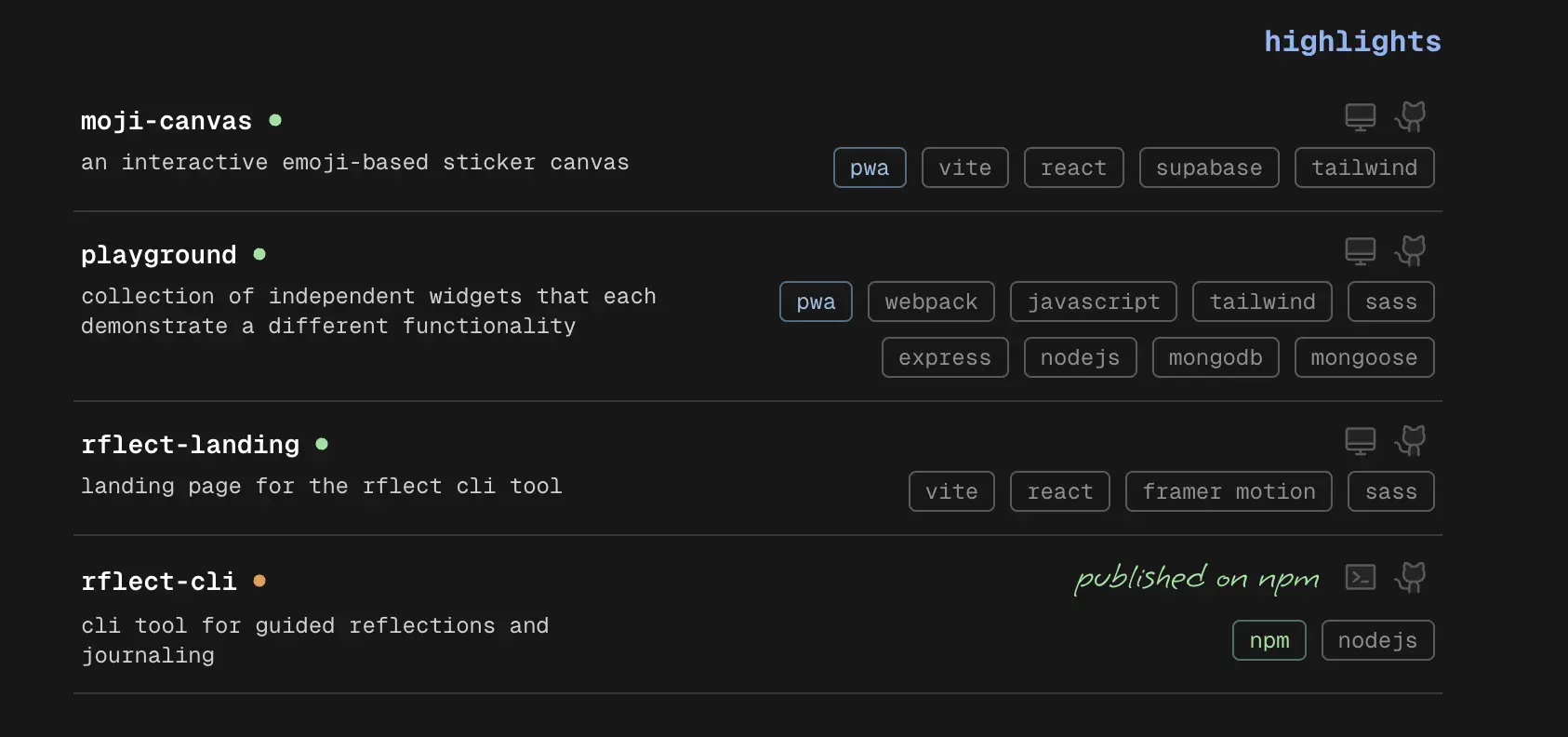
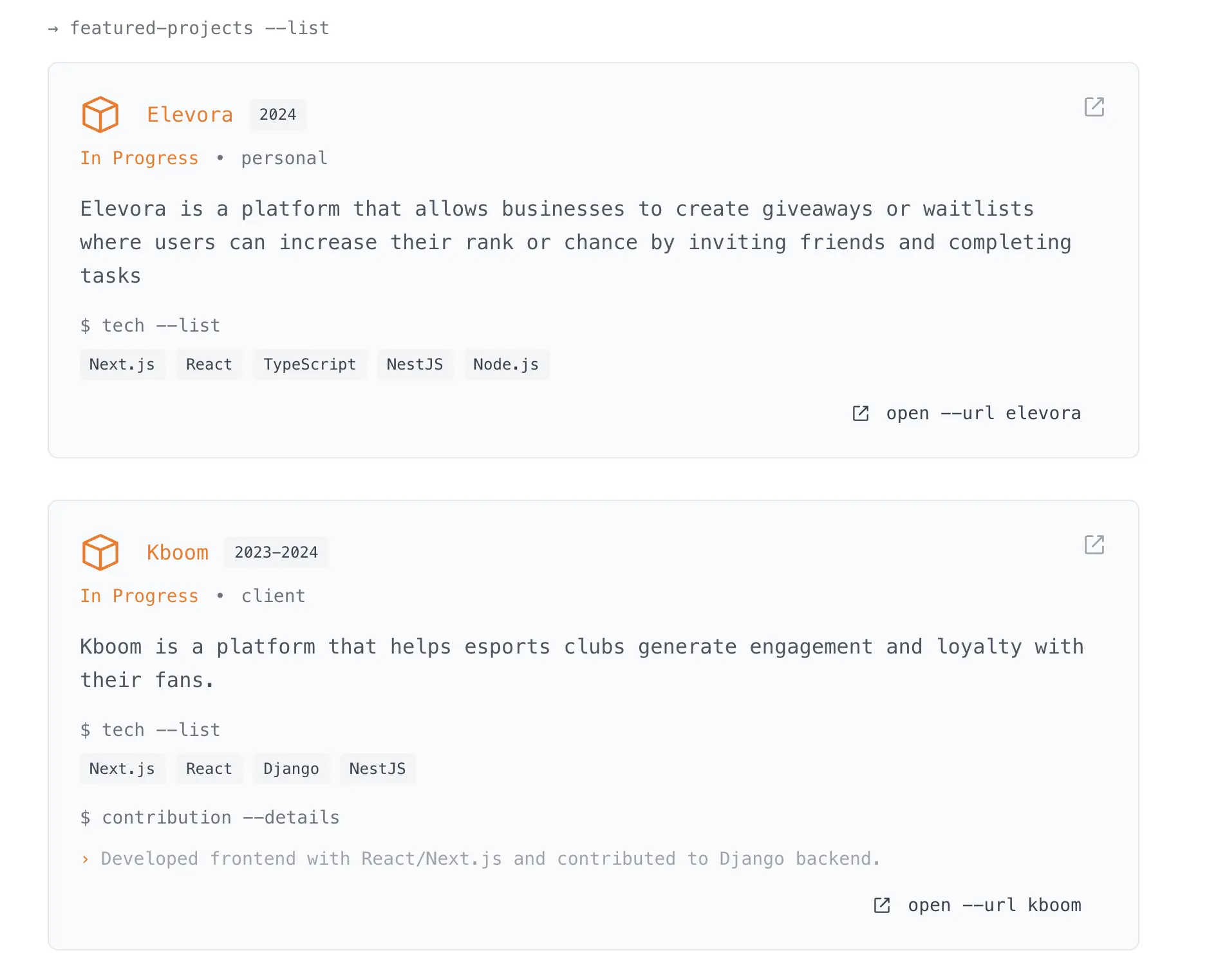
Need project ideas? Check out Web Dev Project Ideas to Build a Standout Portfolio for inspiration!
5. Skills
A skills section is optional if you already list your skills in the projects section. If not, or if you have extra skills to highlight, this section is useful.
You can list your skills in a simple format or organize them by category.
Tip:
If you use icons for your skills, make sure there is a way to see the name of each skill too.
Skills Examples
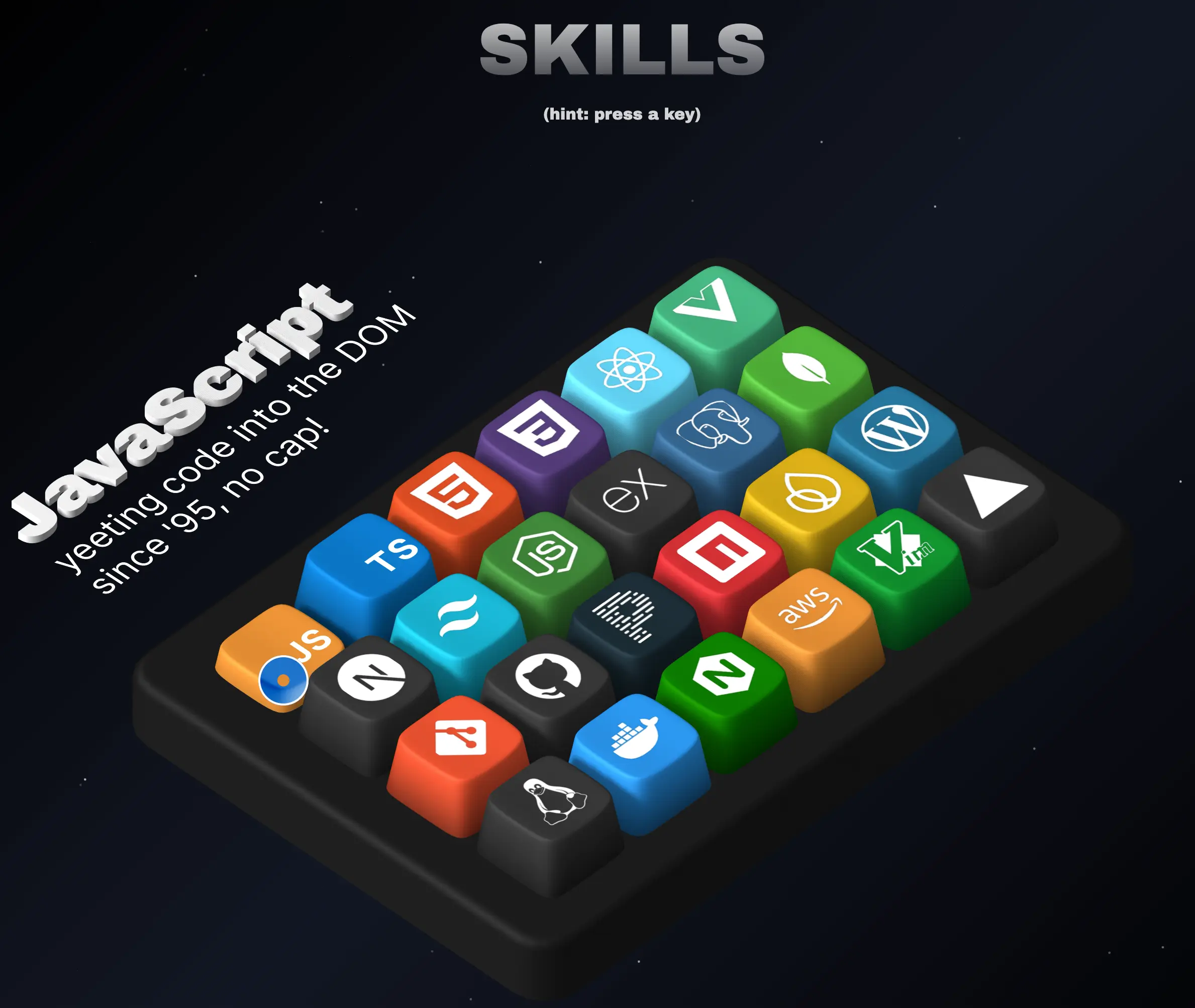
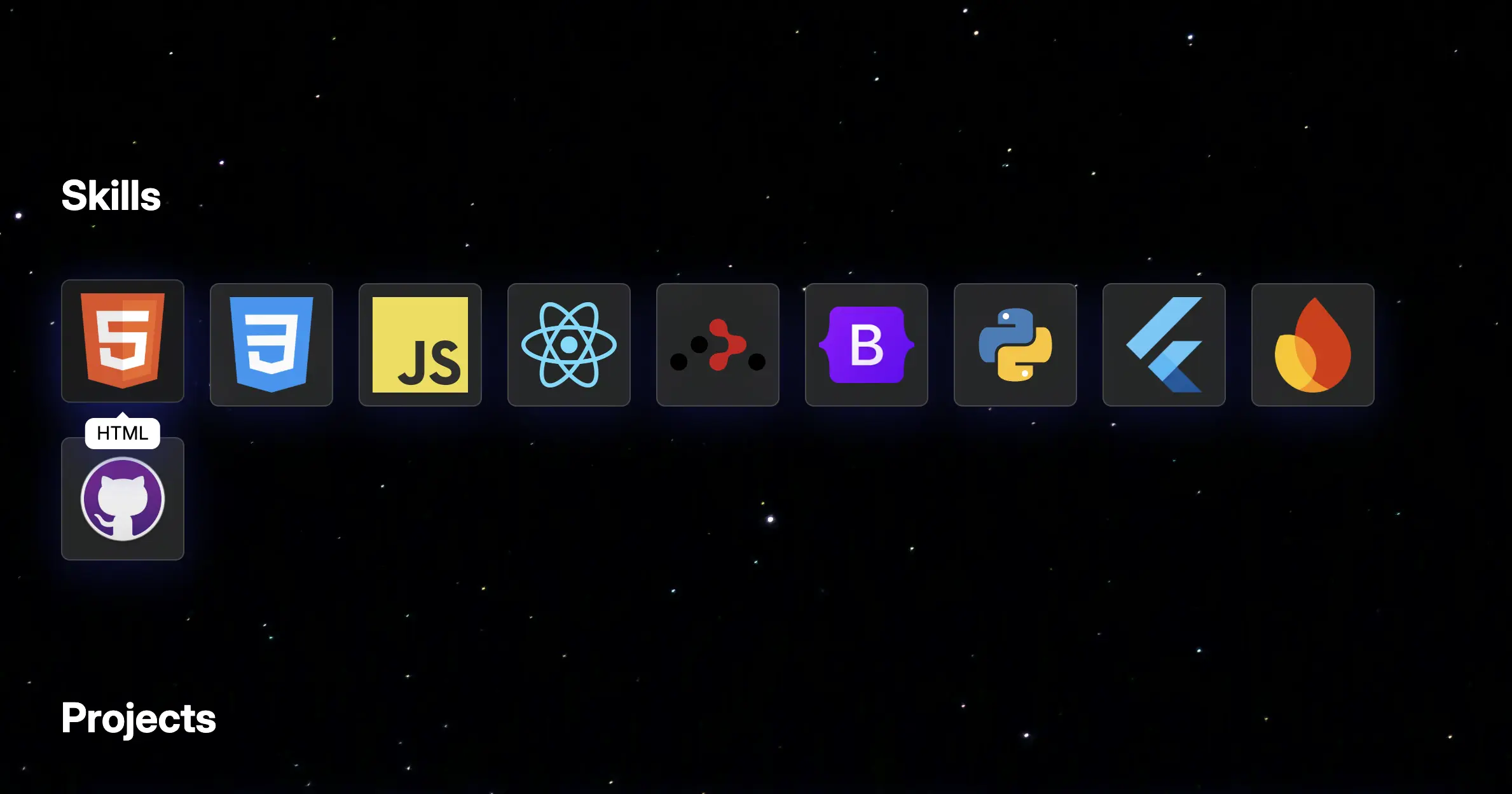
6. Contact
A contact section isn't required, but it can make it easier for people to reach out
Make sure to include:
- A contact form (optional but useful)
- Links to your social media
- Your email address in plain text so people can save it
Need help building a contact form? Check out How to Create a Portfolio Contact Page with HTML
Contact Examples
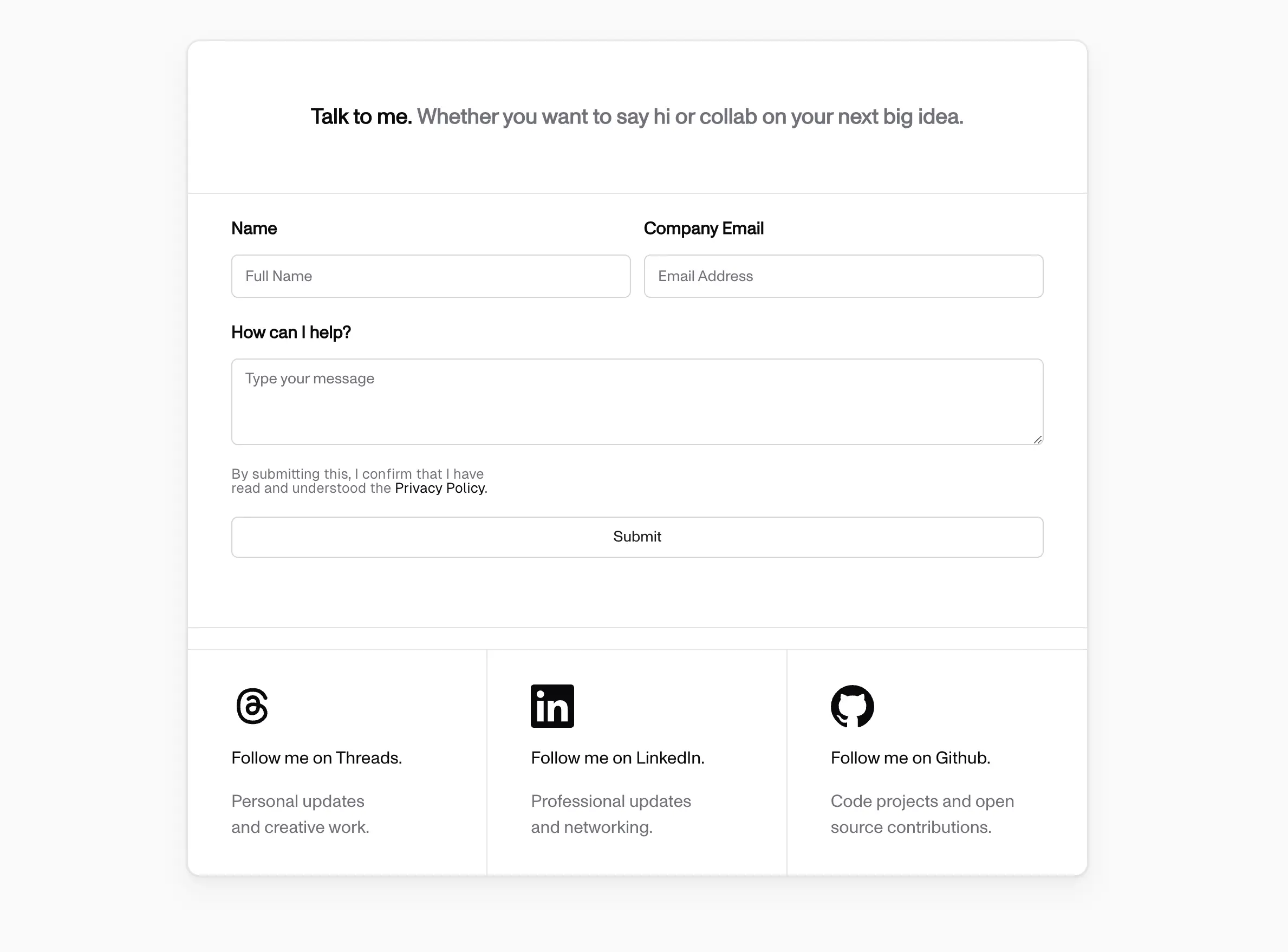
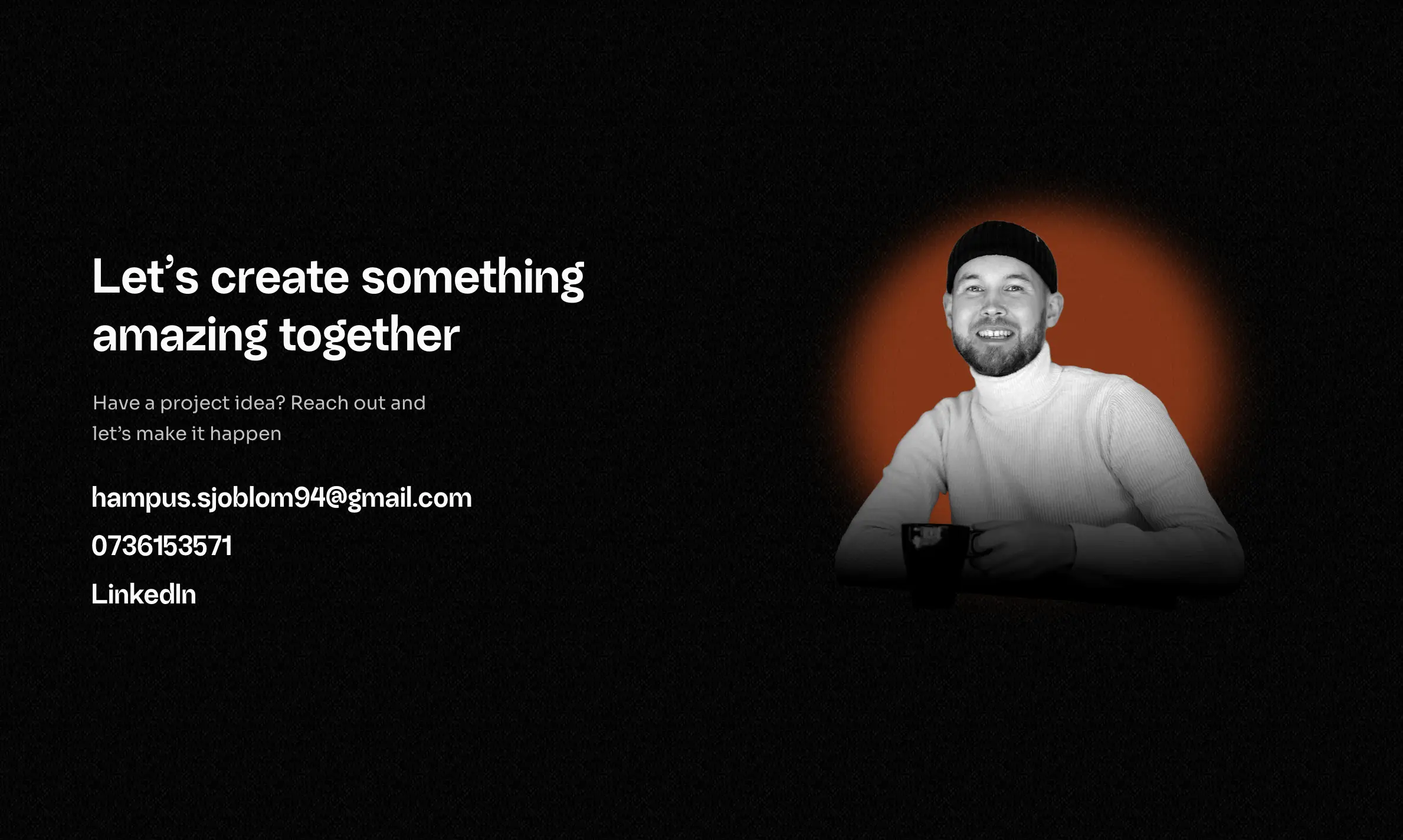
Tip:
If you choose to include a contact section, make sure that all addresses and links you provide stay up-to-date.
Portfolio Design & Structure
Before designing your portfolio, it's important to decide on the tone you want it to have. This will influence things like your color choices, fonts, and layout
Designing a professional portfolio
Creating your portfolio involves several steps, which can be done in any order:
- Choosing a color palette
- Select a font
- Wireframing a layout
Choosing a color palette
A color palette is a set of colors you will use in your portfolio. Each color has a specific purpose. For example: a dark color for titles and a lighter color for the body text.
Tip:
Color palettes can be tricky, but don't worry about making it perfect if you're just starting out.
To get started, pick three main colors:
- Primary Color - Used for buttons like "Contact Me" or "View Live Website".
- Background Color - The main color that sets the theme of your portfolio.
- Text Color - The color for the body text and headings.
For example, if you pick #4902FF, you can build your palette from this color:
- Find Shades & Tints - Use a tool like ColorHexa or Color Hex. Look for the Shades and Tints section.
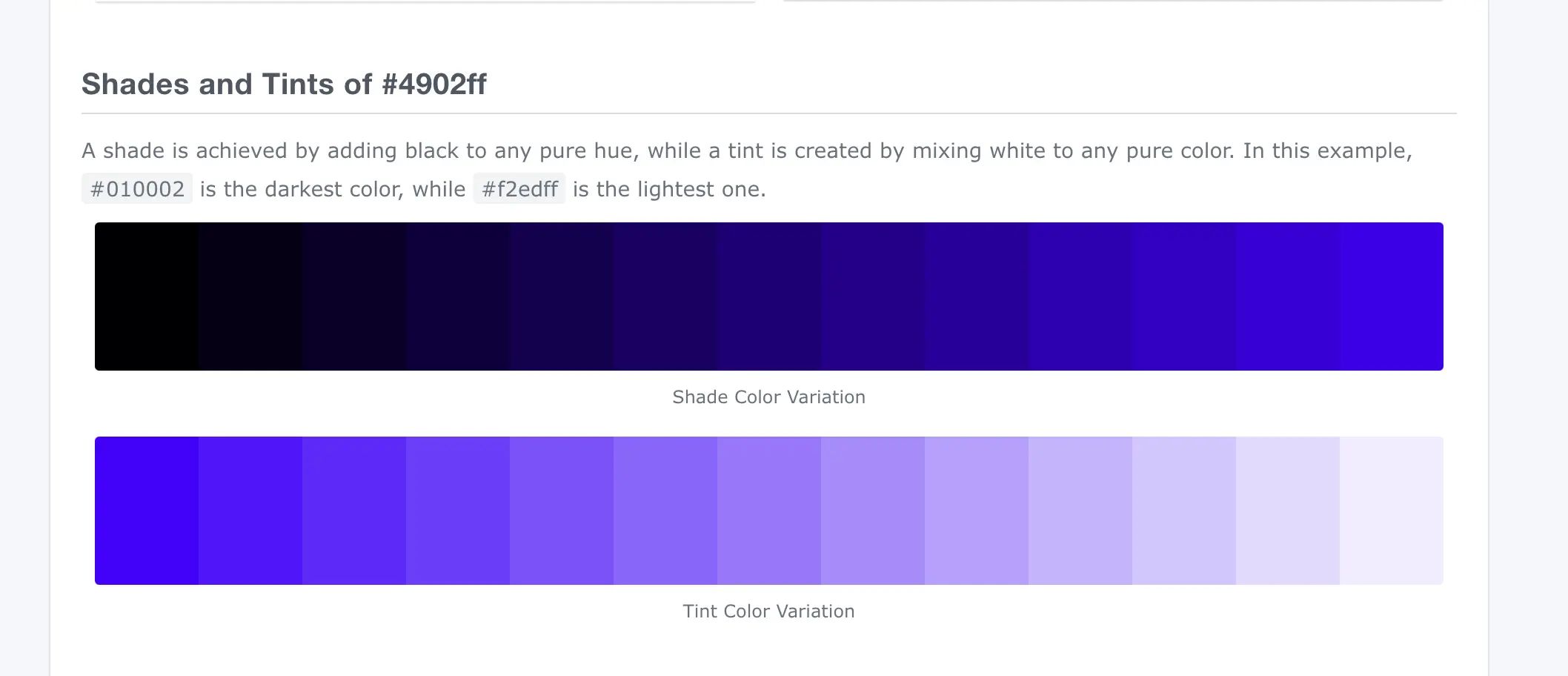
- Pick a Background Color -
- For a light theme, use #FFFFFF (white) or a very light tint of your primary color.
- For a dark theme, choose a darker version of your main color or near-black for contrast.
- Choose a Text Color -
- With a white background, use dark colors, like near-black or a deep shade of your primary color.
- For a dark background, choose light ccolors like white for better readability.
Example: If your background color is #FFFFFF, you might pick #060016 for your text color.
Finalizing Your Palette
With just these three colors, you already have a functional palette. To improve it further:
- Use a color contrast checker to make sure the text is readable.
- Add accent colors for highlights.
- Stick to 2-3 main colors to keep your design simple and neat.
Structuring a professional portfolio
A good structure is key to a successful portfolio. A fancy design with cool animations won't matter if visitors can't easily find what they need.
The structure of your portfolio can be broken into three parts:
- Page Structure - One page vs multi pages.
- Content Hierarchy - The order of your sections.
- Navigation & User Flow - How a user moves through your portfolio.
Build a strong, job-ready portfolio with How to Structure a Web Developer Portfolio (Step-by-Step)—-from layout to must-have sections.
Page Structure
You don’t need to plan every page perfectly at the start—you can always add pages later. But, avoid adding pages that you might not need in the long run.
Most portfolios don't need more than one page, but if you want more, here are some ideas:
- Projects Page - A list of all your projects, not just the featured ones.
- About Me Page - A page where you talk about your background and personality.
- Contact Page - A page with a contact form and links to your social media.
Content Hierarchy
Content Hierarchy is how you organize your portfolio sections.
Your hero section should be the first thing visitors see. It's the most important part of your portfolio.
Recommended Content Heirarchy:
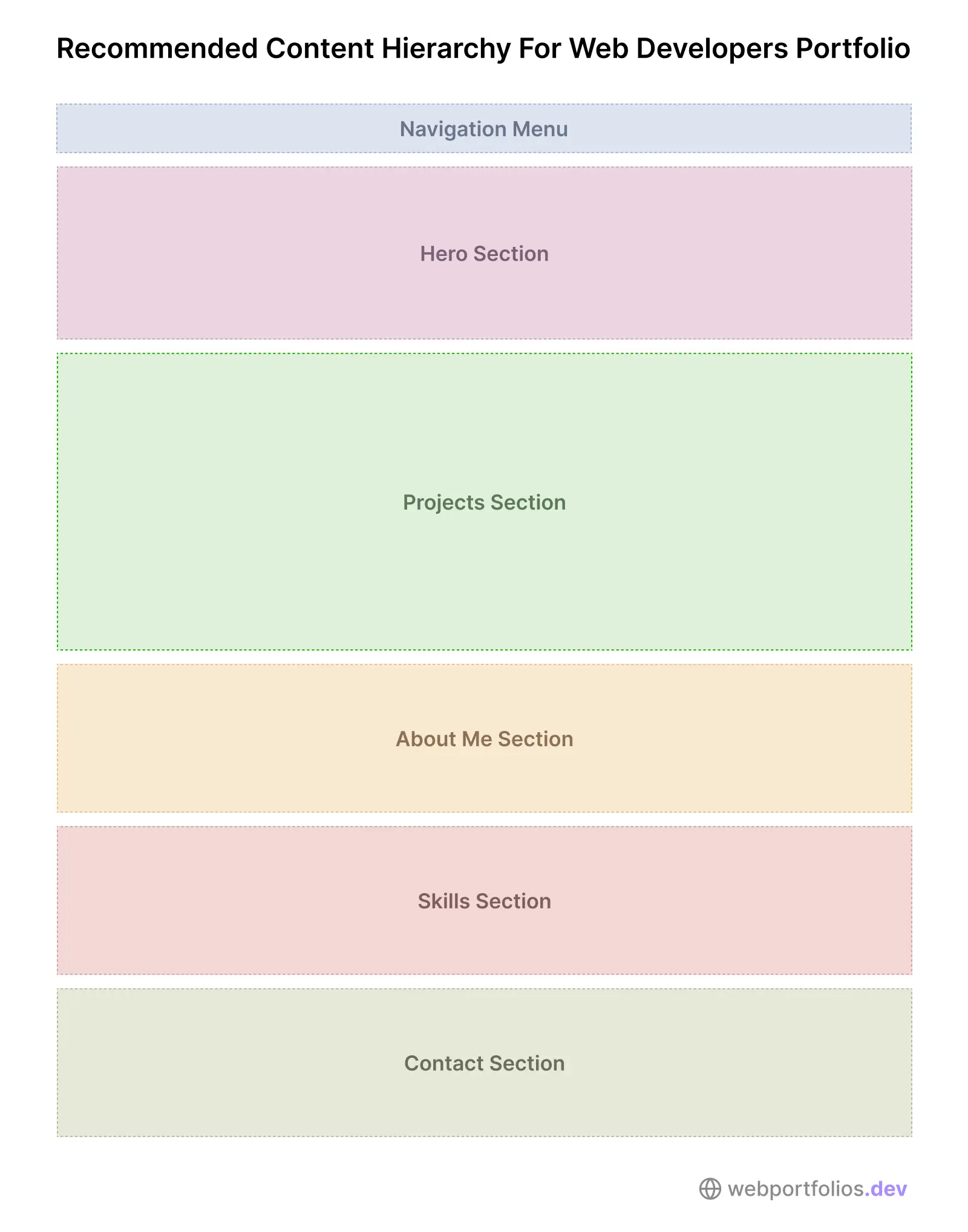
Selecting Your Best Projects
Pick projects that best show your skills and experience:
Quality Over Quantity
It's better to show a few polished projects than many unfinished ones. Aim for 3-5 strong projects that highlight your best work.
Relavance to Your Goals
Show projects that align with the type of work you want. For example, if you're looking for full-stack roles, show web applications. For front-end work focus on responsive websites.
Live Demo or Screenshots
Whenever possible, provide a live link or detailed screenshots. Employers usually don’t want to set up a project just to see how it works.
Demonstrate Impact
Recruiters like projects that solve real problems. If your project is successful, share it on social media. Even a small number of users can add credibility and help you show metrics on your resume.
Conclusion
A portfolio is one of the best first projects for web developers starting their careers. It doesn’t need to be fancy at first—just focus on getting a basic site up and running, and improve it as you get better.
By following these tips, you'll have a site that showcases your skills, experience, and projects. Keep improving it over time and update it regularly with your latest work.
Browse real-world developer portfolios from our community, including front-end developers, web developers, and other roles, to gain inspiration and see how others are showcasing their skills at webportfolios.dev/portfolios